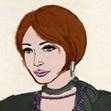Ronesa Aveela's Blog, page 10
August 13, 2021
Bulgaria Day
We recently donated copies of our cookbook to the “Health & Home Cooking” class at Augustine Christian Academy, an interdenominational classical school in Oklahoma, to give them a taste of Bulgaria. At the end of the 2021 school year, close to a dozen thirteen- and fourteen-year-old middle-graders (seventh and eighth grades) put on a “Bulgaria Day” and in class made several recipes from the book: Banitsa, Tikvenik, Rhodopean Klin. Their teacher, Mrs. Merrill pre-made Lazy Koledna Pitka at home and brought it into school, because there wasn’t enough time to make the bread and let it rise during class time.

Banitsa is considered the queen of all dishes, a tasty delight stuffed with a feta cheese and egg mixture. You’ll find it a common staple throughout the country. You haven’t experienced Bulgaria if you’ve never had banitsa. Tikvenik is a type of banitsa that has a pumpkin filling. Rhodopean Klin is another type of banitsa with a filling of rice and spinach, in addition to the feta and egg mixture. And the bread, Kolenda Pitka, is lazy only because this is a more modern version for today’s busy world.
As the cooking progressed, students in surrounding classes could smell the aromas drifting into their classrooms, eliciting groans of hunger and perhaps envy. The cooking students, however, shared their treats with upperclassmen and teachers, and it was a big hit! Mrs. Merrill managed to snag some samples before the students devoured it all and took them to the office. The staff and teachers were loving it and talking about it all morning.

The Kolenda Pitka was devoured quickly, and students had fun reading the fortunes hidden inside. They toasted and buttered bread, and sprinkled the Bulgarian spice, Sharena Sol, onto it. Several teachers asked for the name of the spice so they could order some online, as it wasn’t available locally. Mrs. Merrill commented that next time she’d have to bring more bread and spice.
So many of them said they loved the Rhodopean Klin. Several students told their teacher they’d never had feta before, and they really liked it. One of them thought rolling the banitsa was like rolling a long, coiled snake.
Everyone wanted more of everything. One student commented:
“My favorite was the Tikvenik. I could have ate the whole pan!”
Another said:
“This was so much fun! I’ve never worked with filo dough before.”
Their teacher, Mrs. Merrill, said, “I was jumping around trying to snap photos in between all their questions. And they were devouring the food before I could get good pictures!”
“Needless to say,” she remarked to me later, “you’ve converted a bunch of students and staff to Bulgarian cuisine! This was so much fun! Thank you for sending the cookbooks!!! I think we need a trip to Bulgaria now.”
Photos: by Erin Merrill
Mediterranean & Bulgarian Cuisine is available through Amazon, Barnes & Noble, or by request through any book store or library.
July 9, 2021
Don’t Wait for a Vacation to Read a Book
Running chores all day long, taking care of your family and working long days, does that sound familiar? Maybe it’s time to give yourself a gift. If you haven’t read a book for pleasure lately, pause and allow yourself the time. You don’t need a summer vacation to read a book. Grab a cup of tea or coffee, curl up, and enjoy some “me” time.
The tales and stories inside the pages can help you relax, lose all sense of time, and immerse yourself in a journey that takes you out of your own life and opens new opportunities, ideas, and universes. Sometimes a book can help you resolve an issue or make the next important step in your life.
You can learn so much from the characters and events inside books (fiction or nonfiction). They will guide you from page to page. The passion that pours from line after line of books help awaken your own emotions and memories.
Books are an easy, inexpensive retreat. They’re safe. Even when the content is high-intensity or dangerous, you can close the pages and continue the journey when you’re ready.
The books you read and those that touch you deeply shape your thinking, your vision for the world around you, and they become part of you.
I like to write and create different worlds and characters, because they help me connect with the inner me and my roots, buried deep inside me. I hope by reading my books, you can find something that will touch you, learn something new, awaken a good memory, make or adopt a new ritual, or research a topic and learn more.
Reading is “mindfulness,” because it requires an investment of time and emotion, as well as concentration and imagination. Readers need to be “present” and in constant contact with the characters of the book, their emotions.
For me, reading is an excuse to eat a lot of chocolate.
Here are some of my favorite quotes about books:
“Books are the ultimate Dumpees: put them down and they’ll wait for you forever; pay attention to them and they always love you back.”
― John Green, An Abundance of Katherines
“Books are the quietest and most constant of friends; they are the most accessible and wisest of counselors, and the most patient of teachers.”
― Charles W. Eliot
“Books are a uniquely portable magic.”
― Stephen King, On Writing: A Memoir of the Craft
Happy reading! Make your own ritual, travel to unknown worlds, and build your own mental retreat. You deserve it.
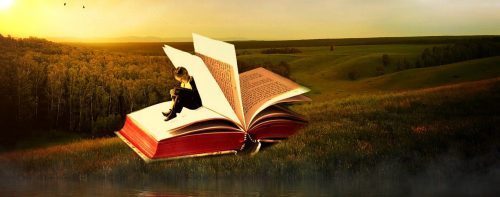
Connections eMagazine runs an annual Reader’s Choice Awards. You can find this year’s entries here: https://melaniepsmith.com/current-contest/?contest=gallery Voting is ongoing until July 19. You can vote once per day, as many books as you like. Feel free to check them out and vote, or simply look for your next favorite book.
June 23, 2021
Thracians’ Gate to World of the Beyond (Summer Solstice Rituals)
We knew little about the ancient Thracians when we started to work on Mystical Emona: Soul’s Journey, our debut novel. When people mention Thrace, the only heroes who readily come to mind are Hercules, Orpheus, and Spartacus – if even those. But Thrace has a vast history beyond its mythology or the conflict with Rome. We enthusiastically rolled up our sleeves and researched their culture, religion, and customs.
Quite often now when we mention the book, people ask, “Where is Thrace?” or “Who were the Thracians? Is that a country?”
So, let’s start with the easy question: “Where is Thrace?” The Thracians lived in southeastern Europe along the Black Sea, in the region that is now modern-day Bulgaria, Greece, and Turkey. At one point, their territory extended even well beyond that area.
“Who were the Thracians?” poses a more difficult question. What we can tell you is that they have been around for a long time. Since the people themselves did not have a written language, everything that is known about them comes from other sources. The first historical reference to them was in Homer’s Iliad, where it was mentioned that they were allies to the Trojans. But evidence of them as a distinct people exists as far back as 1500 BC.
They were a warlike tribal nation, living in mountains and valleys. But they were also great artisans, finely crafting delicate golden objects and painting beautiful murals.
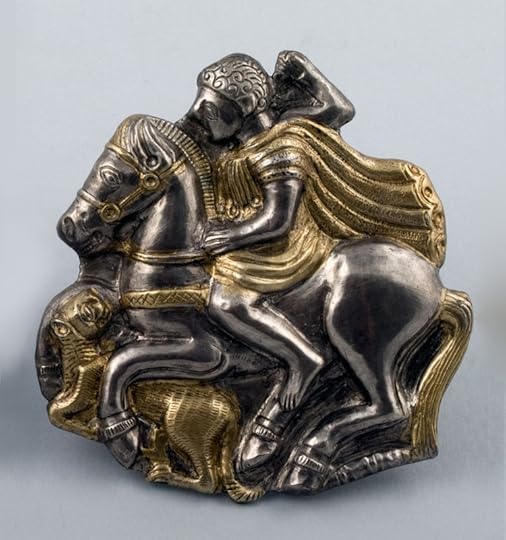 A photo from the exhibition of the Lukovit Thracian treasure in the Lovecг history museum
A photo from the exhibition of the Lukovit Thracian treasure in the Lovecг history museumDaznaempoveche, Public domain, via Wikimedia Commons
Ancient Thracians were well known for their horses. They venerated the animals, considering them mystical creatures that carried men back and forth from the underworld, spoke to give advice, and predicted their master’s future. Thracians believed the animals were immune to spirits and sickness, and could safely transport people through forests and by rivers and lakes where spirits dwelt at night. Some customs dealing with horses were: When a ruler died, his horse was buried with him. Women embroidered images of horses onto clothing to protect family during travels. Heroes took oaths on their weapons and their horses.
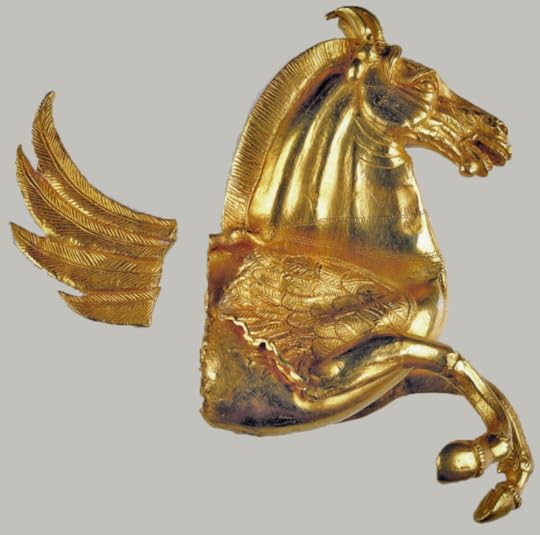 A golden thracian pegasus, found in Vazovo, Bulgaria.
A golden thracian pegasus, found in Vazovo, Bulgaria.Ivorrusev, CC BY-SA 3.0 https://creativecommons.org/licenses/by-sa/3.0, via Wikimedia Commons
A polytheistic people, they worshiped the Sun and Moon. In her “The light imaginary and real sacred space in Thracian rock- cut sanctuaries,” Prof. Valeri Fol wrote: “In the Rock Sanctuaries the rising of the sun symbolizes the birth of the Sun God and his divine power in the days of the Summer Solstice. On the day of the Autumnal Equinox, after which light diminishes, it is equivalent to taking on the path to the World of the Beyond. The rock-cut Sanctuaries most strongly imply the unity of nature and man….”
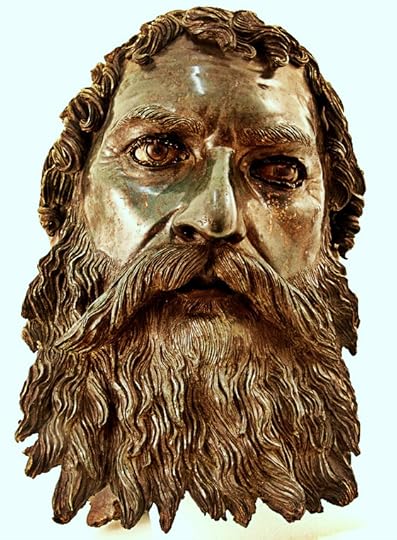 Bronze head of a statue, probably of Seuthes III, found in front of the Golyama Kosmatka tumulus, Kazanlak district, late 4th century BC
Bronze head of a statue, probably of Seuthes III, found in front of the Golyama Kosmatka tumulus, Kazanlak district, late 4th century BCFilipov Ivo, CC BY-SA 4.0 https://creativecommons.org/licenses/by-sa/4.0, via Wikimedia Commons
Every year, thousands of enthusiasts in Bulgaria travel to sacred the Thracian rock sanctuary to see the first rays of the sun on the day of the summer solstice.
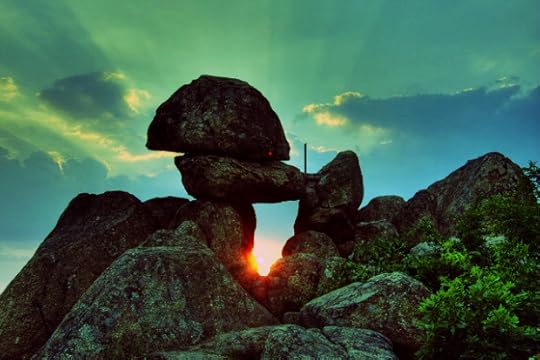 Buzovgrad Megalithic
Buzovgrad MegalithicFilipov Ivo, CC BY-SA 3.0 https://creativecommons.org/licenses/by-sa/3.0, via Wikimedia Commons
Bendis, called the Great Goddess, was one of their primary deities. Better known, however, is Dionysus, the god of wine, whom the Greeks incorporated into their mythology. It’s through the story of Orpheus (you remember him; he went to Hades to retrieve his wife, Eurydice) that the tale of this drunken god is probably best known. The story didn’t end well for Orpheus. The Maenads, followers of Dionysus, tore his apart. Yup, gruesome.
Even today, Bulgaria is known for its wine. Many myths and legends mention Thracian wine. Homer says the most popular wine, one with the best aroma and body, came from the Thracian city of Maroneia. Odysseus also used Thracian wine to put the Cyclops Polyphemus to sleep before he struck the beast in the eye with his spear.
When Christianity crept into the region, the Dionysian cult faded away. But even today the feast of Saint Trifon is celebrated, and the festivities trace back to the cult of Dionysus (for example, pouring wine and electing a king).
But, that could be the topic of another entire post.
Click the links to discover more about our books:
Mystical Emona: Soul’s Journey
Light Love Rituals: Bulgarian Myths, Legends, and Folklore
June 18, 2021
Healing Flowers, Midnight Magic, and Mystical Dancers
Spassovden is a time, in Bulgaria, when Rusalki return from their winter home in Zmeykovo (Dragon Village). They spread life-giving dew on the fields. This dew has an added benefit besides fertility for crops: it can heal diseases, especially the dreaded Rusalka disease, which the spirits themselves bring on people who disobey rules against working.
The night before Spassovden is a time for “impossible wishes” to come true with the help of Rusalki and their favorite flower, rosen (Dictamnus albus or burning bush), which means “dew.” It grows in various places across Bulgaria and blossoms for only a short time in June. According to folklore, it blooms only on the night before Spassovden, when the flower is at its most powerful state for curing people.
The spirits are known to pick the white, pink, or red blossoms this night to make wreaths for their hair. On the Sunday morning after Spassovden, Rusalki use these wreaths to sprinkle the fields with dew. Intoxicated by the fragrance of the flowers, Rusalki become merciful to people.
Rusalii – Dancing for HealthDuring this week Rusalli perform their mystical dance to heal people and chase away evil spirits. Diseases Rusalki cause are not to be trifled with. To rid a person of this type of illness requires various means to scare away the spirits and drive out the illness: incantations and loud noises, such as rattling cans, ringing bells, whistling, and singing. The best solution, though, is to pay the Rusalii to heal you, and you’ll get all those methods at once.
Who or what are the Rusalii?
The word refers to a group of men who travel from village to village, healing those inflicted with Rusalka disease and possessed of unclean forces. The name is associated with the rituals or festivities celebrated as well. The rituals have mostly died out today, but are still performed for show.

These rusalia or rusalii celebrations, as they were called, have been recorded as far back as the late Middle Ages. In the twelfth century, legal scholar Theodoros Balsamon wrote about popular fairs called “rousalia” that occurred after Easter. And in the thirteenth century, a Bulgarian archbishop mentioned the name in a homily.
Rusalii festivals take place three times a year: around the spring equinox (Rusalka Week), the summer solstice (Midsummer’s Day or St. John’s Day), which is celebrated in northern Bulgaria, and the winter solstice (the “Dirty Days,” the twelve days from Christmas to Epiphany), which is celebrated in southern Bulgaria. During the cold months, the men drive away karakondjuli (night spirits), talasumi (evil spirits), and zmeyove (dragons). In the warmer months, it’s Rusalki and Samodivi (woodland nymphs) they focus on. The spring rusalii, which has “a military flavor,” is performed to cure the sick and drive away disease; the ceremonies also are dedicated to fertility and Rusalki, who bring that fertility. The spring rusalii is when Rusalki begin “to dance their way out of the wild into the world of farmer and shepherd.”
Midnight MagicIn a ritual called “visiting the rosen” or “walking on the dewy rosen grass,” sick people go to a field where this plant grows, or their relatives bring them there if they’re too ill to venture out on their own. Most often, however, people go there in secret, not allowing anyone to see them arrive.
They choose a location that’s close to a holy spring where a church or chapel has also been built. Magic wells with water that cures all diseases are often found in locations where Rusalki live. It’s possible that the springs found near rosen fields in these sacred places are ones that connect with these magic wells. One famous place you can go to is the village of Resen, which gets its name from the flower. Or perhaps you’d rather go to Krustova Gora, Holy Trinity Cross Forest, in the Rhodope Mountains. You can also travel to the Bulgarian Lourdes, a plain near the foot of the Stara-Planina mountains, where rosen grows in abundance.
Ill people, clothed in white, wash with the sacred water, then prepare for the night ahead. They spread a white sheet on the ground to sleep on. Near where their head will lie, they place a bowl of water, a twig from a rosen bush, a lit candle or oil lamp, and a white handkerchief on which they place gifts for the spirits: a cup of honey and rolls spread with honey, shirts, towels, stockings. Before they go to sleep, the people eat a meal they’ve brought: bread, cake, roasted chicken, wine, rakia (Bulgarian brandy).
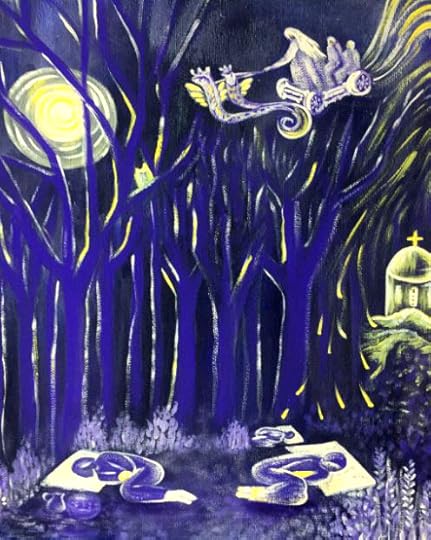
They must keep a strict silence during the night. At midnight, Rusalki arrive, bearing their queen on a chariot of human bones. They cause a whirlwind to blow over the sleeping humans, carrying with it the soft, whispered words, laughter, or songs of the spirit maidens.
As the Rusalki gather flowers, they strew leaves, twigs, sand, insects, and petals over the sleeping people. Tales have been told of people feigning sleep, those who have lost a limb, hearing Rusalki say, “Restore (person’s name) leg (or hand or fingers).” All who hear the spirits speak their name are destined to be cured.
In the morning before sunrise, people who could sleep through the turmoil awake and check their surroundings. The sight before them displays the fact that the spirit maidens have been present during the night. One person in the village of Lyaskovets said that when he took his father to the rosen field for treatment, in the evening the flowers of the dew were whole, and the next morning most of the flowers were broken, as if cut with scissors.
Everyone examines the water and handkerchiefs to determine their fate. If nothing has fallen onto the cloth or into the water, it means Rusalki have chosen not to heal the person. Others are fortunate if green leaves and live insects have dropped onto the items they set out. This means they will recover. If the leaves and insects are dead, or the water and handkerchief are covered with twigs, the people will remain ill and possibly even die from their malady. Dirt left on a handkerchief is a certain sign the person will die from his disease.
~~~
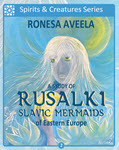 The above is an excerpt from our book about Rusalki. You can get a copy at all major retailers if you’d like to learn more about these lovely maidens and beliefs about them: A Study of Rusalki – Slavic Mermaids of Eastern Europe.
The above is an excerpt from our book about Rusalki. You can get a copy at all major retailers if you’d like to learn more about these lovely maidens and beliefs about them: A Study of Rusalki – Slavic Mermaids of Eastern Europe.
June 14, 2021
Bulgarian Embroidery (Shevitza)
Everyone has their own path. Like ants, we hurry and wander and look for something. As Grandma used to say, we spend our whole lives building our home and family.
The paths of our life are like Bulgarian embroidery; they wind like a beautiful Bulgarian horo dance and form infinity.
Everyone carries in his heart the tree of life! That tree embroidered by our great-grandmothers, grandmothers, mothers, mothers-in-law. It is woven into the wood carvings around the church altars made by the skilled hands of the woodcarver masters. In its crown stands the center of the universe – love.
The love with which the Bulgarian woman made the cloth for the sacred shirts.
In the embroideries our grandmothers and great-grandmothers have encoded blessings for health, happiness, longevity, love, abundance, children, prosperity and spiritual cultivation!

Each element in Bulgarian embroidery has its meaning and purpose. The colors are not random; they are aligned with taste and symbolism.
The shirt (riza) is of great importance in the life of the Bulgarians. Shirts are given at weddings, name days and baptisms.
In the past, the embroidered shirt was the first and perhaps the most important garment of the Bulgarian’s clothing and is believed to shape his identity. Its place in the costume is as the main bearer of the signs of social status. The shirt is sacred. It is made of linen or hemp (cotton fabrics) because these fabrics were thought to have a protective effect, and the inability to count the threads in the sleeve is considered a sure protection against evil and bad eyes. The shirt is richly embroidered with traditional symbols and embroideries, which are believed to protect from evil eyes and troubles.
That is why the wedding shirt has a very lavish ornamentation. This shirt is carefully stored until old age as a garment for heaven. It was believed that in paradise, on the wedding shirt, the man and the woman would meet and reunite in eternity.
White and red are the main colors in wedding attire, which symbolize male and female, heaven and earth, connected in a sacred marriage with each other. White is a symbol of the feminine principle, of purity and virginity, and red of the masculine principle, of fire and fertility.
It is no coincidence that we use white and red to make the ritual Bulgarian martenitsas.

In Bulgarian folklore, white is the color of innocence and beauty. The face of the most beautiful girl is white. In Christianity it is a symbol of faith, purity and truth. It is also associated with death. In the Strandzha region the color of mourning is white. The shirt of the haiduk (freedom fighter), who goes to the gallows, is white.
Green – this is the color of Mother Nature and new life. It is associated with the Tree of Life.
Blue – this is the angelic color that represents the sky, the sea, the water. It embodies truth and trust, purity, serenity and contemplation.
Yellow – a symbol of gold and the Sun, a source of joy and merriment, fire, light, as well as the afterlife and the dead.
Black / brown – the color of Mother Earth. It embodies stability and security, fertility.
The symbolism of the Bulgarian embroideries is as rich as the soul of the Bulgarian people. Each region has its own characteristics.
Regardless of the differences, all roads intersect in our ancient Bulgarian roots.
Folklore and traditions help us to understand our past and identify and build our future.
You can learn more about different Bulgarian customs in our book Light Love Rituals, available from all major retailers.
June 11, 2021
Roses, June’s Liquid Gold
As summer in the northern hemisphere approaches, life begins to return to normal. Stores and restaurants are re-opening, and those fully vaccinated are told they don’t have to wear masks. Many of us who paused our vacation and travel plans are now eager to explore the world once again. Bulgaria, as I’ve mentioned in books and blog posts, is my native country. I’d like to take you on a virtual trip there.
Bulgaria is a small country known for its good wine, Nina Dobrev, colorful pottery, and organic yogurt. Besides the different creatures found in folklore and mythology, Bulgaria is also rich in rituals and traditions, some dating back thousands of years to the ancient Greek and Thracians.
Roses play an important role in the Bulgarian culture and economy. June is National Rose Month, since the weather is ideal for growing the flower. More than 150 varieties grow across the Northern Hemisphere and even more around the globe. Roses remain a popular flower for the ever-popular June weddings.
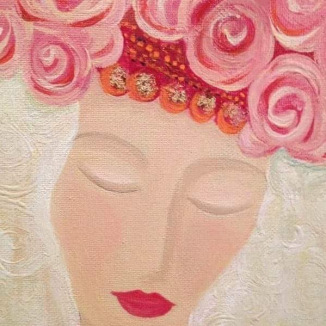
In Bulgaria, the oil from roses has been called “liquid gold” because of its unique properties and high price. Many perfumes contain Bulgarian rose oil.
Rose oil is also a natural elixir with innumerable benefits. It contains minerals, vitamins, and antioxidants, which have calming, anti-inflammatory and nourishing effects. I use rose water to moisturize my skin, because it helps maintain high levels of hydration, while making it soft to the touch. In addition, aromatherapy with rose oil reduces levels of cortisol (the stress hormone) and has a positive effect on depressive states.
But this isn’t a wellness article. Instead, I want to share the importance of special roses called Rosa Damascena. The flower traveled from India and Persia, through many countries, to find the perfect conditions in a new home in the mild climate of central Bulgaria, in a region known as the Rose Valley. Production of rose oil here dates back to the 16th century, while in the 19th century, Bulgaria became the world leader in its manufacturing. This area is also well-known for the Valley of the Thracians, a name popularized by archaeologist Georgi Kitov. It’s here in the Kazanluk Valley that you’ll find a high concentration of monuments from Thracian culture. It’s believed there are more than 1,500 funeral mounds in the region, with only 300 having being researched so far.
The Rose Festival in Bulgaria is one of the most exciting festivals of roses around the world. Thousands of visitors travel to the Rose Valley every summer to discover the hidden mystery behind the celebration of the rose. The festival of the roses includes authentic rituals and events such as rose-picking, a rose parade, and a rose queen ceremony. You can also attend a kukeri show and explore local cuisine and dances.
Isn’t that amazing?
This year the festival was held on June 4 to 7.
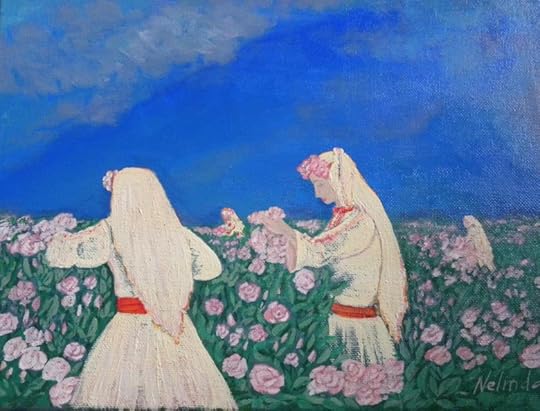
An article from our friends at Bulgarian National Radio talks about the festival this year and who was chosen for the new Rose Queen: https://bnr.bg/en/post/101479069/rose-festival-in-kazanlak-ends-with-parade-of-aroma-and-beauty
The New England Bulgarian community of Kazanluk started a similar tradition to celebrate their heritage and the beauty of the roses. Around 10 years ago, they established an Annual Bulgarian Rose Festival.
The event takes place in early June as a celebration of this long-standing tradition from the Balkan rose valley, where not only Bulgarians but everyone is welcome to enjoy traditional music and dancing food and roses.

We hope you enjoy the warm weather, stay safe, and surround yourself with happiness, good summer books, and roses.
May 29, 2021
Summer Reading – A Magical, Cultural Trip to Bulgaria
Learning about your heritage and preserving your traditions in your own family is a great way to teach your children about the family’s cultural and religious history and to add to their personal identity. Observing, preserving, and creating new traditions are ways of honoring your ancestors and also welcoming new members in.
This is the reason a few years ago I started writing books inspired by Bulgarian mythology and folklore, and tales learned from my grandparents in Bulgaria. What better way for the whole family to read, do activities and learn more about their heritage, or learn about another culture?

My Dragon Village series is not an exception. It’s inspired by the mythological village called Zmeykovo (Dragon Village) where all mystical creatures live. It’s a perfect summer read. As soon as book one was published, it became an Amazon #1 New Release in Children’s Multicultural Literature. In book two, readers will meet new exciting creatures and learn more legends while taking a journey of a lifetime. Book three will be available later this year.
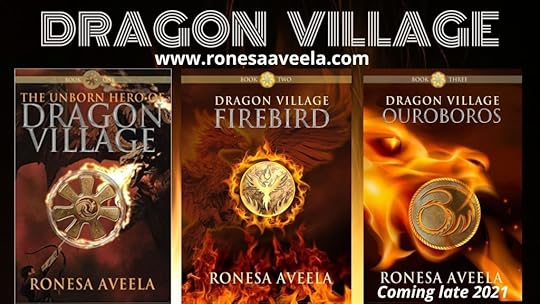
I didn’t forget about summer reading for parents. My novel Mystical Emona, set in Bulgaria, is an inspiring story about love. It takes place in Emona, a small village on the coast of the Black Sea. It’s a place where wild horses have roamed the land since of the time of King Rez and the Thracians. In the novel, Stefan is a widowed artist from Boston, Mass, with a young daughter. He hopes moving to a secluded village on the Black Sea coast will ease his pain, and the wild, untamed beauty of this surrounding will inspire him to take up his art once again. He meets a mysterious woman and his life changes. He is drawn to her by some unknown bond, but cannot give his heart to her fully because his memories refuse to release their hold on him. Then the dreams begin. Some delightful. Others terrifying.
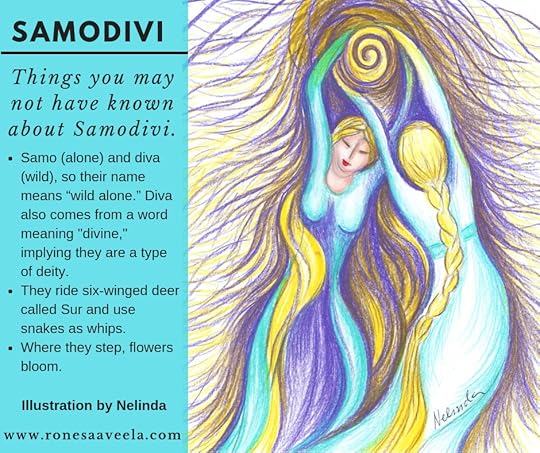
Bulgarian culture is rich in folklore and traditions surviving since the days of the ancient Thracians. As pagan and Christian religions collided, many celebrations merged into one. Light Love Rituals will take you on a journey to discover these unique festivals.
Light Love Rituals not only describes the rituals, but also makes them interesting and understandable to people of all ages. The book is divided into four seasons, beginning with winter. It includes activities where you can learn how to make martenitsi, survachka, and Easter eggs dyed with natural colors.
A short quiz after each season lets you test your knowledge of what you’ve read. To help you engage in the traditions in the book, you’ll meet Maria and her family. They’ll open the doors of their home so you can participate in these celebrations along with them. For an added taste of Bulgaria, try some of the traditional recipes at the end.
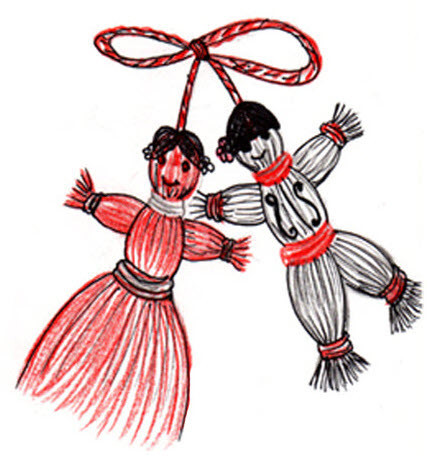
Everyone loves food. It brings friends and family together around the table. Even during the pandemic, cooking and family have become more important. I grow up in Bulgaria and let me tell you, no finer tradition exists than making Bulgarian cuisine, which is as rich as the soul of the people. The meals, like the colors woven into the nation’s rugs, represent the hospitality and rich spirituality of its people. From the mystical Rhodope Mountains, the birthplace of Orpheus, to the Thracian Valley, known for its roses, whether the dishes are light or hearty, they will always be savory. Learn about the queen of the Bulgarian cuisine “banitsa.” Traditionally, lucky charms are put into the pastry on certain occasions, particularly on New Year’s Eve. These charms may be coins or small symbolic objects (e.g., a small piece of a dogwood branch with a bud, symbolizing health or longevity). More recently, people have started writing happy wishes on small pieces of paper and wrapping them in tin foil. Wishes may include happiness, health, or success throughout the New Year.

Happy reading and enjoy your summer fun!
You can discover all of our books here and the various retailers who sell them: Ronesa’s Books.
May 14, 2021
Dragon Slayers Trivia
May 6 was St. George’s Day for Bulgarians (April 23 for some other nationalities). If you’re like most people, the first thing you’ll think about when you hear that name is that he slew dragons, since that’s how he’s often portrayed in art. Like many other dragon slayers, St. George saves maidens from the beast. But did you know these heroes have additional reasons for defeating dragons?
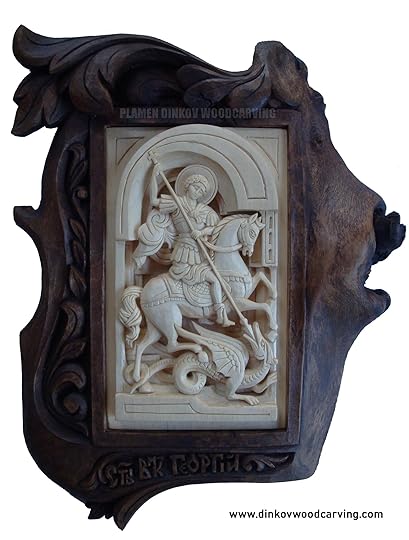
Dragons steal more than maidens. Some (such as Lamia and Hala) steal water and fertility itself from the land. Heroes fight with these dragons to force them to release the water to restore fertility and natural order to the land.
Some of these dragon slayers have amusing names, like Little Rolling Pea, who derives his name from the manner in which he was conceived:
“There was a husband and wife. The wife went for water, took a bucket, and after drawing water, went home, and all at once she saw a pea rolling along. She thought to herself: ‘This is the gift of God.’ She took it up and ate it, and in course of time became the mother of a baby boy, who grew not by years, but by hours, like millet dough when leavened.”
Like Little Rolling Pea, these heroes have supernatural qualities, growing to adulthood faster than normal being one of the things that identifies them as future heroes. Great strength and cunningness are other characteristics.
Dragon slayers can’t take full credit for their heroic deeds, however. They are often assisted by a variety of animals. In some stories, the hero comes across an animal in trouble, and he helps out. In return, the animal performs tasks that enable the hero to defeat his dragon foe. At other times, people the hero meets along the way provide him with magical objects to help him defeat the dragon or escape from it.
Or they may help the hero reach his destination. Dragons live in faraway places, called “the other world” (among others), which is a name for the land of the dead. And, in order to be able to access and return from this place, the hero must have special knowledge or use his magical gifts.
Not least of all, the hero also often has a heroic horse to aid him in his battle. These horses can speak, and they offer their wisdom. The horses also prove worthy in battles.
You can learn more about dragon slayers in our book A Study of Dragons of Eastern Europe. We’ve also published a book of Dragon Tales from Eastern Europe.
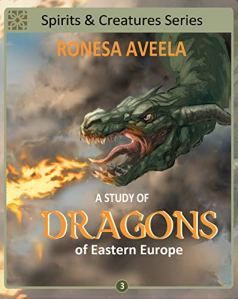
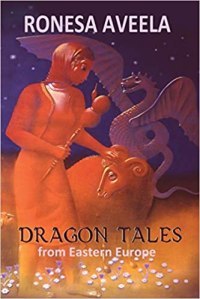
May 12, 2021
The Beauty and Power of Woman
I’m sure many of you have seen the painting of a beautiful mermaid combing her hair with a dreamy look on her face. Mermaids have fascinated artists and writers for centuries. John William Waterhouse is no exception.
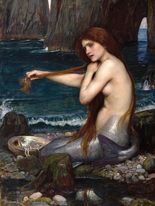
Mythology and tales have had a great impact on his work. He was a renowned and notable English painter and draftsman. His paintings were characterized by an intense appreciation of natural light and setting, and a deep inspiration from bold, strong, and beautiful female figures.
He had an eye for natural beauty and beautiful female figures. He painted several portraits of some of the era’s most famous women. One of my personal favorites is his fascinating portrayal of Cleopatra, a woman of mystery in the Western imagination. It’s never been completely agreed upon whether Cleopatra was more alluring due to her beauty or her brilliance. Waterhouse has managed to intertwine the two traits. He depicts a woman of great intensity and power, and one of intelligence and sexuality.
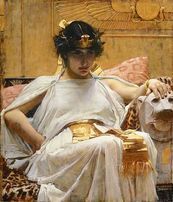
Looking at his paintings it’s difficult for me to describe the Waterhouse women, but they all have something in common. They all are the same model, a woman called Muriel Foster.
I see each of them as a morning rose ready to blossom. Each one is innocent and perfect, but at the same time, bewitching the viewer. They are calm, but strong, contemplative, and proud. In their countenances, you can see they dream of love and deserve to be adored and cherished like a fragile flower.
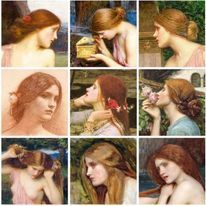
Waterhouse created around 200 paintings during his life. Some of his most famous and widely applauded works include “The Lady of Shallot,” “Ophelia,” “The Enchanted Garden,” “A Naiad,” “Consulting the Oracle,” and “Gather Ye Rosebuds While Ye May,” among many others.
It’s a testament to the work of Waterhouse that the Royal Academy displayed his last work, “The Enchanted Garden,” upon his death, even though it was never finished.
You can find some of Waterhouse’s works in our Redbubble store, as well mythological themes from other great painters. Please stop by and visit: https://www.redbubble.com/people/ronesaaveela/shop
April 9, 2021
Bulgarian Easter Traditions
Easter for many of you was this past Sunday, but for the Orthodox, it will be on May 2 this year. In recognition of this holy day, I’d like to share with you an excerpt from my book, The Wanderer, my memoir about my experiences of being an immigrant, and how our customs and traditions influence our lives. At the end, I’ve also included a traditional Easter recipe: Lamb with Dock. Enjoy!
~~~
Since the majority of Bulgarians are Orthodox Christians, many of us celebrate Easter twice—once on our own holiday, and again to honor friends and new relatives with different backgrounds, or just to make our children part of the surrounding culture.
Easter holidays in Bulgaria start with Lazarov Day (Lazar’s or Lazarus’ Day) and Tsvetnica (Flower Day) and culminate on Easter. This year Tsvetnitsa is on April 25. These are the best spring holidays when nature wakes and everything comes back to life. People open windows, clean their houses, and go to church every Sunday. When I was a student, we were forbidden to attend church. Back in the Communist era, we were told we had to forget religion and traditions so as not to undermine the authority of the Party. Even so, we hid and walked to attend the service secretly, so we weren’t expelled from school. The world is small, as we like to say, and one year, I stood side by side with my French teacher in church. She looked away from me with candles in her hands and pretended she didn’t see me. I did the same. We both knew we needed to keep the secret.
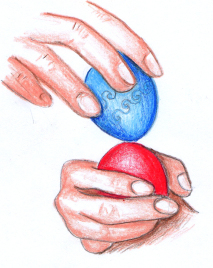 In Sofia, the measures were quite strict, but in small villages and towns people were able to celebrate and attend church more easily. In the years when I studied in Sandanski, a small town in southern Bulgaria, a friend invited me to the holiday in one of the neighboring villages so that I wouldn’t be alone at the boarding school. The alley was pretty: white houses stained with colored rugs, and yards arranged with flowers and greenery. The church stood at the entrance to the village on a small hill with a view to the nearby Struma River. After the liturgy, young and old went out and, instead of the traditional “knocking” of their colored eggs (that is, tapping them end to end), they began to throw them over the church roof. Then they went outside the church yard, set food on picnic tables, and the fun began. The people of southern Bulgaria were warm and hospitable, and I always felt at home during my school years. It eased my nostalgia.
In Sofia, the measures were quite strict, but in small villages and towns people were able to celebrate and attend church more easily. In the years when I studied in Sandanski, a small town in southern Bulgaria, a friend invited me to the holiday in one of the neighboring villages so that I wouldn’t be alone at the boarding school. The alley was pretty: white houses stained with colored rugs, and yards arranged with flowers and greenery. The church stood at the entrance to the village on a small hill with a view to the nearby Struma River. After the liturgy, young and old went out and, instead of the traditional “knocking” of their colored eggs (that is, tapping them end to end), they began to throw them over the church roof. Then they went outside the church yard, set food on picnic tables, and the fun began. The people of southern Bulgaria were warm and hospitable, and I always felt at home during my school years. It eased my nostalgia.
Bulgaria is a small country, but every region, village, and town has its own rituals and beliefs. It was interesting to observe traditions by visiting families and places that were new for me. I think we all need to be open to new experiences and appreciate the beliefs of others. Each ritual or custom has a reason behind why it’s performed.
Some of these traditions are regarding eggs, one of the most common foods at Easter, for Bulgarians and other nations as well. From ancient times, the egg has been a symbol of birth, resurrection, and eternal life—life and death—with a belief that the world was born from the golden egg, that is, the sun. The parts of the egg represent the four elements. The shell is symbolic of earth: the membrane represents air, the liquid is water, and the yellow yoke is the sun and thereby fire.
The time to celebrate in secrecy eventually passed, and after the change of government in October 1989, democracy brought back freedom. Everyone then had the right to practice their religion. Easter and all other holidays are impeccable for Bulgarians not only today, but also in the past.
When I was a child, from time to time I stayed with my grandparents in a village in northern Bulgaria. Easter in my memories was about colors and flowers. I remember Lazar’s Day and the lazarki, a group of cheerful girls who walked from door to door to sing for the prosperity and health of the occupants. The girls carried baskets and dressed in traditional costumes, wearing wreaths made from flowers. At the time, I badly wanted to join them, but I was too young. When they arrived at our house, Baba went to the cellar and brought eggs, honey, and walnuts as gifts for the girls.
On Tsvetnica, the next day, we went to church to pray. For us, it was a double holiday because my grandmother’s name was Tsvetana (which means “flower”), so we also celebrated her name day. On Flower Day she made me a wreath from willow branches and flowers so I would be slender and playful like the tree. After church, people came over to celebrate her name day. The feast was not as it is now. Back then, the doors were open for all guests—those expected and unexpected alike. They came in happy, bringing gifts and wishing her good health. Baba gave them red wine and home-baked bread and other meals she had prepared for her special day. Since it was Lent, people fasted and kept other prohibitions.
My grandmother used natural dye to color the eggs: beets for the red, onion pills for the orange, and gold from the seeds of the dill. She also used these natural colors to dye wool and cotton. She told us we needed to color the eggs before sunset on Maudy Thursday (the Thursday before Easter). If we couldn’t color them on that day, we had to dye them without telling anyone. The reason for this was that we had to make sure the devil didn’t discover us dyeing eggs on Friday or Saturday. If he did, he’d destroy the healing and protective powers those special eggs held.
I still generally dye the eggs on Thursday and always make a red egg special for God. Traditionally, this is the first red egg. It has magical, healing power; on Easter morning, I rub the egg against my children’s cheeks and make a cross on their foreheads for health. We keep this red egg set aside for a whole year. Sometimes our kitten forgets it’s a holy egg and breaks it early. When the kitten doesn’t break it, we don’t throw last year’s egg away. Instead, we bury it in the garden for fertility.
The culmination of the Easter festivities happens on Sunday. In Bulgaria, we went to church and on the way back visited the graves of our closest relatives to give them food, eggs, and wine.
Now and in the past all our Easter festivities are filled with light and love. Nature wakes up, and everyone is looking forward to the coming summer and long, sunny days. People are craving light, joy, and love.
A major part of the festivity is the meal. In addition to the traditional bread called kozunak and the colorful eggs, Bulgarian cook lamb.

Lamb with dock or spinach is one of my favorite meals during this season. This delicious dish is suitable for Easter and to welcome Spring.
I’m not a gardener, but I have few spices (mint, parsley, fresh garlic) in my garden that are a traditional part of Bulgarian cuisine. Dock is one of these plants, but you can substitute fresh spinach or even kale if you like to experiment. There’s nothing complicated in preparing lamb with dock.
Dock – commonly known as broadleaf dock, cushy-cows, butter dock, kettle dock, curly dock, and smair dock – is a species of flowering plant in a buckwheat family Polygonaceae. It’s native to Europe but is also available in the United States, Australia, New Zealand, and other countries.
Since ancient times, dock has been known as a medicinal plant and used in traditional remedies. It possesses various antiscorbutic, astringent, cholagogue, depurative, homeopathy and laxative properties which have beneficial effects to maintain one’s overall health.
To prepare lamb with dock, you need:
2.2 pounds boneless, trimmed, lamb shoulder, diced
2 Tablespoons olive oil, divided
1 midsize onion or a green fresh onion, sliced
2 cloves garlic, finely chopped
1 1/2 Tablespoons sweet paprika
2 cups water
25 grams butter, cubed
1 1/2 cups from the water where the meat was boiled
1 cup basmati rice, rinsed and drained
1 bunch of dock or replace with spinach, trimmed and roughly chopped
Salt & pepper
Enjoy this delicious spring meal made with gift a from nature.

